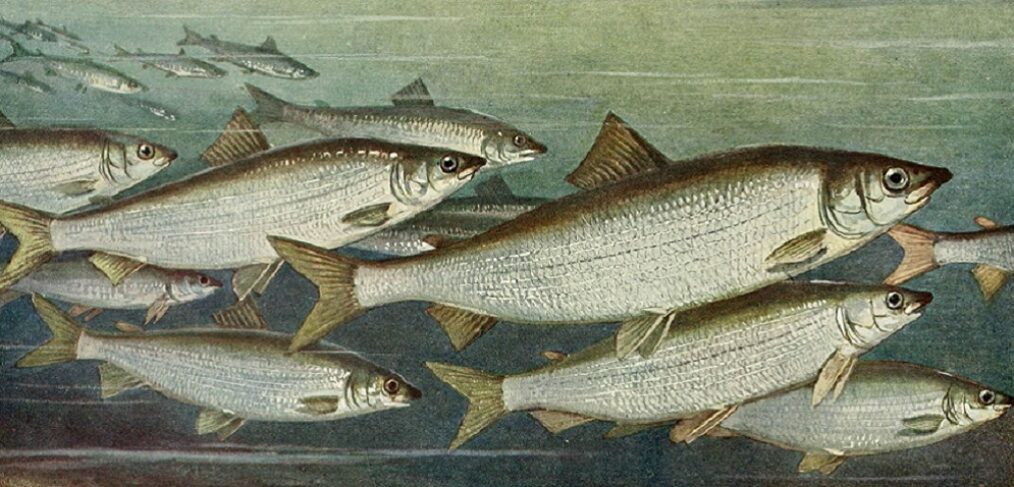
Species of the week #111 – Houting
A heated discussion is raging about the Rhine houting. It is extinct worldwide; however, a closely related species of houting has been bred by the Danish Ministry of Fisheries since 1981 to enable restocking in the original habitat. But what if the original Rhine houting still exists somewhere and is then finally displaced by its relative? An extinction dilemma in several dimensions.
| Distribution Status in Germany | extinct |
| Remaining occurances | None known |
| Last sightning in Germany | 1940 |
| Habtiat | Wadden Sea and adjacent rivers |
| Threat | Barriers, pollution, loss of spawning grounds, shipping traffic |
The snout of the Rhine Houting ends in a small point, which gives it a funny appearance. It has few, if any, teeth in its mouth and, like all moray eels, has an adipose fin that allows it to swim in the current in a particularly energy-efficient way. The Rhine Houting grows to a maximum length of 50-70 cm, weighs about 2 kg and feeds on plankton and plants at the bottom of the water. It is a schooling open-water fish and lives mainly in coastal areas outside the spawning season. However, in captivity it can also spend its entire life in freshwater. Externally, the Rhine Houting can hardly be distinguished from other Houtings, as the external body shape of the Houting varies greatly. For exact species identification, one therefore needs scales or gill spines; easier, of course, is a DNA analysis.
The Rhine Houting is also called North Sea Houting. It lives in the Wadden Sea and rises in the Rhine and Ems to spawn there. Unfortunately, the Rhine Houting is very weak in jumping, so that it cannot ascend any further to its spawning grounds at the first small barrier. Barrages and weirs thus prevent the Houting from breeding.
In the past, the Rhine Houting was an important fish species for Elbe fishermen and brought in large yields. At the end of the 19th century, however, catches declined and since 1935 there have been no more Rhine Houting in the Elbe. Attempts have long been made to reintroduce the Houting through stocking. So far, however, only one population in the Danish river Vidå seems to be stable and able to sustain itself without support. This is the source population for the Danish offspring and reintroduction programmes in the Lower Rhine and the Treene in Schleswig-Holstein.
The causes for the disappearance of the Rhine Houting populations are to be found in the construction of rivers, pollution of estuaries, making spawning rivers navigable, loss of spawning grounds, overfishing and heavy shipping traffic. They are thus manifold, but always influenced by humans.
Political necessity:
- Removal of barriers in rivers
- Renaturation of water bodies
- Improving water quality
